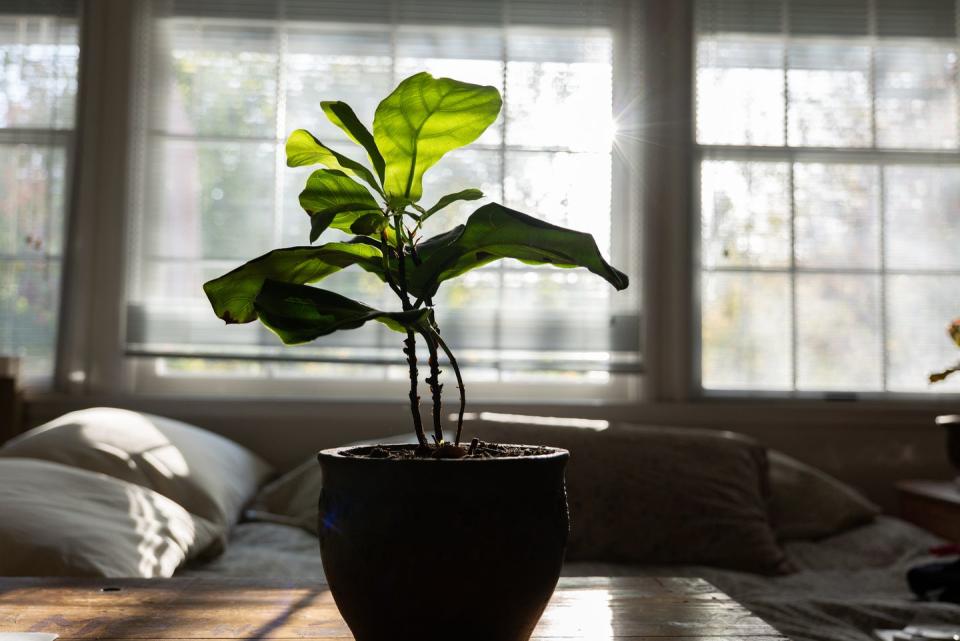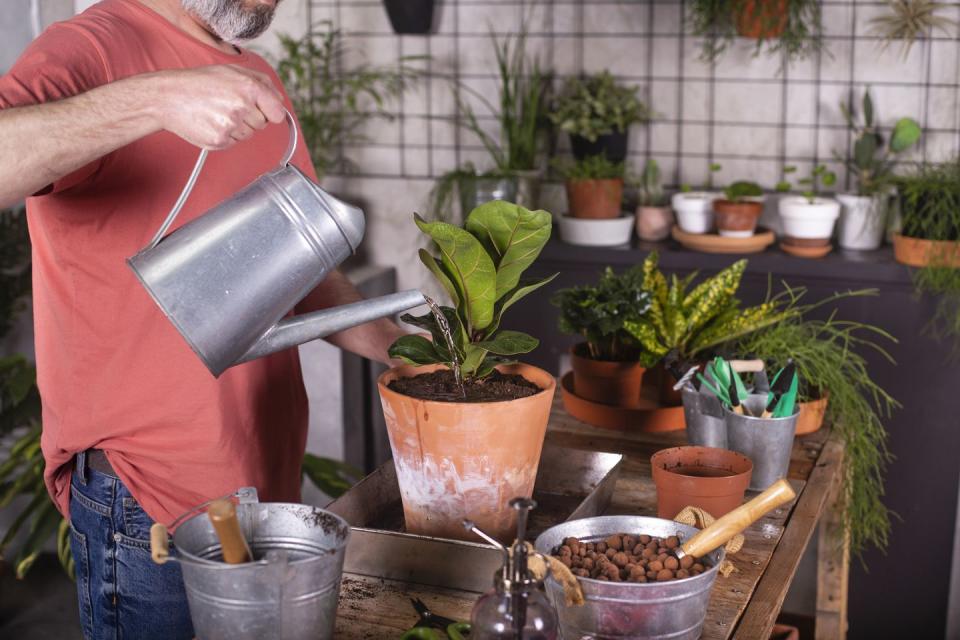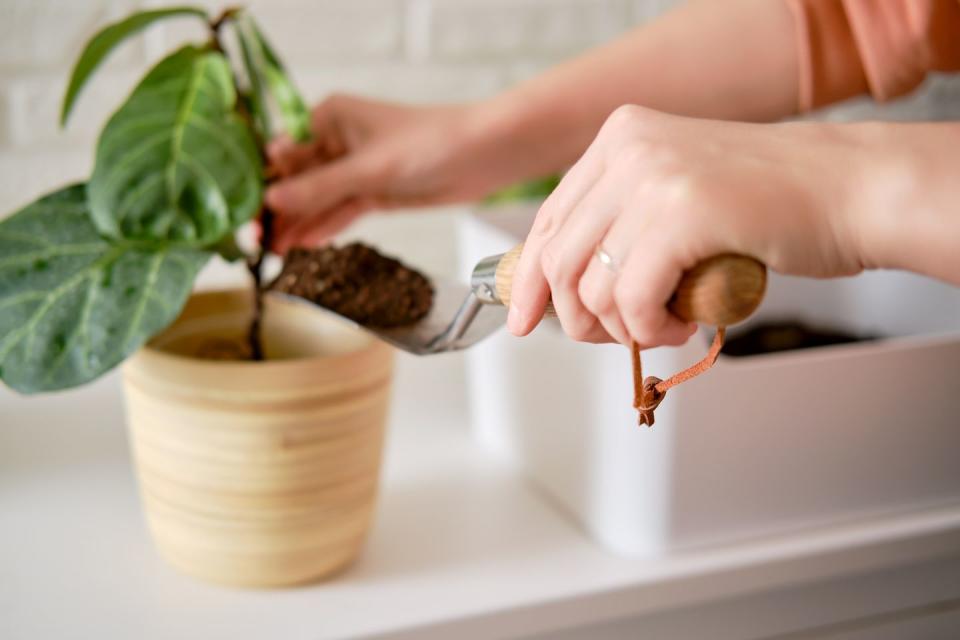How to Keep Your Fiddle Leaf Fig Tree Alive Without Losing Your Mind
Fiddle leaf fig trees have long been the stars of social media with good reason: A healthy fiddle fig is straight-up gorgeous. If you're trying to make your home Instagram-worthy, this houseplant is the answer. With broad leaves shaped like a fiddle—hence its name—this eye-catching plant adds bold, dramatic texture to any room.
Native to tropical regions in Africa, a fiddle leaf fig (Ficus lyrata) can grow up to 25 feet tall in the landscape. It can be grown outdoors in USDA Hardiness Zones 10 and warmer, such as southern California or southern Florida. But as a houseplant, it can reach up to ten feet tall. It's not super fussy, though it does get cranky if you don't give it the exact conditions it likes.
Before you take the plunge and add this plant to your collection, you need to do your homework. Fiddle leaf figs tend to be more expensive than many other types of houseplants, so you want to make sure you have the right conditions before investing in one. If a fiddle leaf fig doesn't get what it wants, it will start to look bad in a hurry.
Ahead, here's everything you need to know about keeping your tree alive and thriving, whether you're a plant person or not:

What kind of light does a fiddle leaf fig need?
Fiddle leaf figs need light, and lots of it! Indoors, they need bright indirect light, but they shouldn't bake in direct sunlight. The more light they get, the better they will look (and the faster they will grow). This plant does not—we repeat, does not—do well in low-light areas. If you do not have tons of bright light (that is, the plant casts a sharp shadow during the middle of the day), move on and find a low-light houseplant, or consider investing in an LED grow light, like one below.
Also, fiddle leaf figs should be kept away from heating vents or drafty windows and rotated every few weeks, since they grow towards the sunlight. This will help your plant grow more evenly and prevent it from getting spindly and unattractive.
How do you water a fiddle leaf fig?
More plants die from overwatering than underwatering, and this is true of a fiddle leaf fig too. Water it only when the top two inches of soil feels dry to the touch. Before watering, stick your finger into the soil—if it's damp on top or soil clings to your finger, check again in a few days. Then, give it a good long drink. You can also feed this plant with a general purpose liquid fertilizer when you water occasionally, though it's not totally necessary.

How do you prune a fiddle leaf fig?
If you're having good luck and your fiddle leaf fig is happy in its new home, it may grow more quickly than you want—or it may start to look gangly. You can prune it back any time of year if it's becoming spindly. Pinch the new growth on the ends of each branch, which will stimulate them to grow bushier. Heads up—wear gloves! This plant has a milky-white sap that can irritate skin. And make sure to wipe up drips on the floor to protect pets.
How do you repot a fiddle leaf fig?
Surprisingly, fiddle leaf figs don't need to be repotted that often: Every two to three years is sufficient. Signs that it might need a bigger pot include: If the soil is drying out more quickly than previously, if you see roots on the soil surface, or if roots are poking out the bottom of the pot.

In this case, it's time to repot, and repotting a houseplant isn't difficult. Find a pot that's about two to three inches larger than the current one—and make sure it has drainage holes so excess water can run out, because no plant likes wet feet. Turn your plant on its side and gently work its way out of the old pot. Use a garden trowel if you need to loosen it at the edges of the pot to get it started. Slide the plant into the new pot, and add soil to fill the pot, pressing down to eliminate air pockets. Water well and return it to its original spot in your home.
Are fiddle leaf figs toxic to pets?
Unfortunately, fiddle leaf figs are toxic to pets, according to the ASPCA. Ingesting this plant causes irritation and burning of the mouth, tongue, and lips, excessive drooling, vomiting, and difficulty swallowing. If you know you have a nibbler, consider a different plant. And if you suspect your pet has munched on your fiddle leaf fig—even if you're not sure—call your vet ASAP. It's always better to be safe than sorry.
Follow House Beautiful on Instagram.
You Might Also Like

